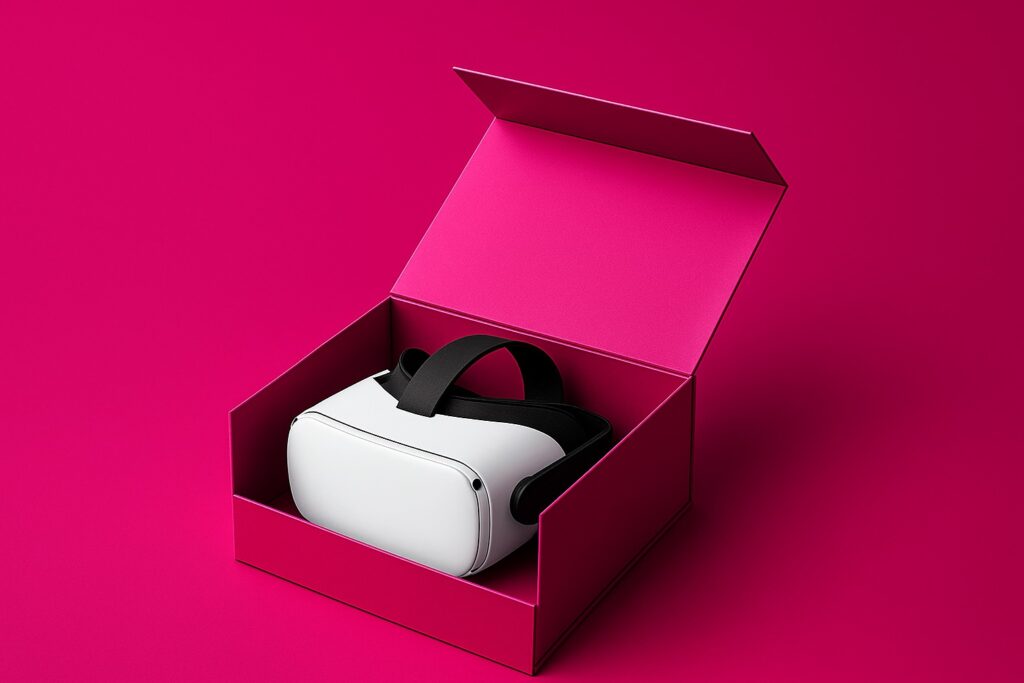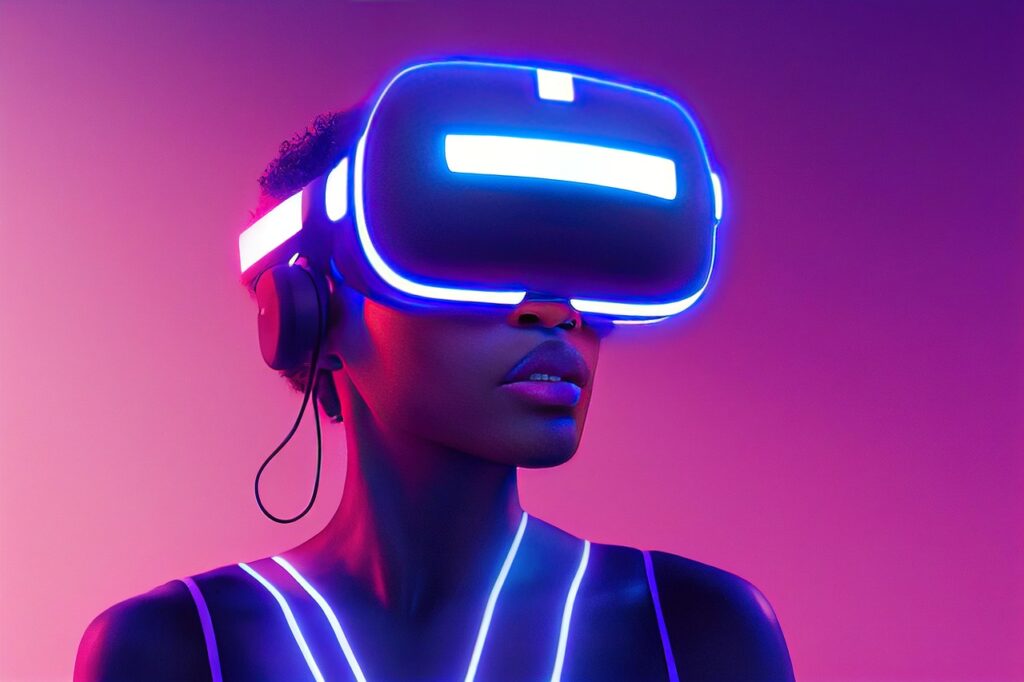Augmented Reality (AR) for selling has allowed retailers to offer an immersive experience to their customers. Consumers can now have real-time interactions with products while remaining in their own environment. AR acts as a bridge between physical stores and online shopping experiences, and retailers are now starting to take advantage of this technology’s opportunities when integrated into a sales strategy.
A consumer AR survey conducted by Google found that 66% of consumers are interested in using augmented reality technology to assist them when shopping. The director of product management at Google, Jennifer Liu, highlights the importance of this technology in e-commerce: “For many consumers, it is the best alternative to having the product in their own home.”
Augmented Reality helps bring products to life with detailed information, allowing customers to feel confident about their purchasing decisions. Google also found that six out of ten people would like to visualize where and how a product may fit into their lives. By making this visualization possible before committing to a purchase, AR technology improves the customer experience.
Here are other numbers proving that augmented reality technology is starting to take off in the sales field:
Augmented Reality makes it possible for customers to preview products and experience services in their environment and time, right before deciding to make a purchase. With AR, they are more likely to choose the right product the first time.
This is great for online shoppers to know how the items work for them. Customers want to be sure about what they are getting and, similar to being in a physical store, they would like to see how a product looks on them. This way, they understand what they are buying and can reduce their precaution and insecurities within the purchasing process.
Is this couch matching my living room? How would this colour look on the walls? These are real and common concerns for customers when searching for this kind of product.
Preview placement gives them a real-time glimpse of how the product would look placed in their environment.
Did you know you can implement AR technology to elements like business cards? This can be a great idea to create a unique and interactive experience when scanning the QR code on its back with a camera phone. People will remember your brand for a long time.
Communicate through filters on your social media to increase engagement with your people and boost your marketing. It is a simple and easy way to increase engagement without pressuring your audience.
From a marketing point of view, the packaging of a product is an opportunity to make a product attractive and create unique value for consumers. Adding AR technology to packaging will create a lasting impression of the brand on our public and a unique shopping experience and higher engagement.
And we haven’t even mentioned the viral marketing opportunities.
Augmented Reality used in retail allows companies to inform and connect with their clients and continue to engage consumers after making a purchase. In addition, younger generations are looking for more interactive shopping experiences that incorporate AR and VR technology.
AR is purely interactive, which makes it easier for your clients to get hooked in your store. The more time they spend store, the more chances to make a purchase. And even if they end up not buying anything, the improved engagement means that they have developed a relationship with your brand and your products, and it is more likely for them to remember you in the future.
We live in a boisterous world, and an engaging augmented reality campaign can be the perfect way to create a big buzz and get people’s attention.
AR allows you to give customers a lot more information about a product than with other static elements such as an image or even a video. You can offer 3D views of a product or show what would it look like on the consumer or in his space. This makes them less likely to receive the product only to find that it doesn’t look as expected.
Alright, picture now that you decided to make use of AR in your business. What now?
The first step is to clarify what you want to achieve. Figuring out your vision and goals is essential before moving to any technical aspects of AR function. You must know what you want to commit to choosing the correct tools and techniques.
And the second question you must ask yourself is, how does it help your customers? This is what can turn your AR application into success. You must know precisely what you want to achieve with the customer experience.
Now that you have a plan, it is time to start creating. It would help if you began to identify those tools you would use, and do so; you might want to have a look at a few aspects:
Once you have created your tool, you want the world to know about it. Here is some advice:
Get started by emailing us or booking a call directly and let us reimagine your retail expereince!
By clicking the “send” button, I agree to the collection and processing of my personal data as described in the Privacy Policy.

In the world of immersive technology, storytelling is more than just narrative: it’s an experience, with 3D characters at its core. They embody emotion,...
Read More
The modern retail landscape is constantly evolving, prompting brands to continually seek new ways to captivate and engage their audiences. With the rise of...
Read More
Music has always had the power to move, connect, and transform. But what happens when sound meets spatiality? When rhythm interacts with space, and...
Read More| Cookie | Type | Duration | Description |
|---|---|---|---|
| __cf_bm | 30 minutes | This cookie, set by Cloudflare, is used to support Cloudflare Bot Management. | |
| __hssc | 30 minutes | HubSpot sets this cookie to keep track of sessions and to determine if HubSpot should increment the session number and timestamps in the __hstc cookie. | |
| __hssrc | session | This cookie is set by Hubspot whenever it changes the session cookie. The __hssrc cookie set to 1 indicates that the user has restarted the browser, and if the cookie does not exist, it is assumed to be a new session. | |
| __hstc | 1 year 24 days | This is the main cookie set by Hubspot, for tracking visitors. It contains the domain, initial timestamp (first visit), last timestamp (last visit), current timestamp (this visit), and session number (increments for each subsequent session). | |
| _clck | 1 year | No description | |
| _clsk | 1 day | No description | |
| _fbp | 3 months | This cookie is set by Facebook to display advertisements when either on Facebook or on a digital platform powered by Facebook advertising, after visiting the website. | |
| _ga | 2 years | The _ga cookie, installed by Google Analytics, calculates visitor, session and campaign data and also keeps track of site usage for the site's analytics report. The cookie stores information anonymously and assigns a randomly generated number to recognize unique visitors. | |
| _gat_gtag_UA_189660369_1 | 1 minute | Set by Google to distinguish users. | |
| _gat_UA-189660369-1 | 1 minute | A variation of the _gat cookie set by Google Analytics and Google Tag Manager to allow website owners to track visitor behaviour and measure site performance. The pattern element in the name contains the unique identity number of the account or website it relates to. | |
| _gid | 1 day | Installed by Google Analytics, _gid cookie stores information on how visitors use a website, while also creating an analytics report of the website's performance. Some of the data that are collected include the number of visitors, their source, and the pages they visit anonymously. | |
| ANONCHK | 10 minutes | The ANONCHK cookie, set by Bing, is used to store a user's session ID and also verify the clicks from ads on the Bing search engine. The cookie helps in reporting and personalization as well. | |
| CLID | 1 year | No description | |
| CONSENT | 2 years | YouTube sets this cookie via embedded youtube-videos and registers anonymous statistical data. | |
| cookielawinfo-checkbox-advertisement | 1 year | Set by the GDPR Cookie Consent plugin, this cookie is used to record the user consent for the cookies in the "Advertisement" category . | |
| cookielawinfo-checkbox-analytics | 0 | 11 months | This cookie is set by GDPR Cookie Consent plugin. The cookie is used to store the user consent for the cookies in the category "Analytics". |
| cookielawinfo-checkbox-functional | 0 | 11 months | The cookie is set by GDPR cookie consent to record the user consent for the cookies in the category "Functional". |
| cookielawinfo-checkbox-necessary | 0 | 11 months | This cookie is set by GDPR Cookie Consent plugin. The cookies is used to store the user consent for the cookies in the category "Necessary". |
| cookielawinfo-checkbox-others | 0 | 11 months | This cookie is set by GDPR Cookie Consent plugin. The cookie is used to store the user consent for the cookies in the category "Other. |
| cookielawinfo-checkbox-performance | 0 | 11 months | This cookie is set by GDPR Cookie Consent plugin. The cookie is used to store the user consent for the cookies in the category "Performance". |
| CookieLawInfoConsent | 1 year | Records the default button state of the corresponding category & the status of CCPA. It works only in coordination with the primary cookie. | |
| elementor | never | This cookie is used by the website's WordPress theme. It allows the website owner to implement or change the website's content in real-time. | |
| fr | 3 months | Facebook sets this cookie to show relevant advertisements to users by tracking user behaviour across the web, on sites that have Facebook pixel or Facebook social plugin. | |
| hubspotutk | 1 year 24 days | HubSpot sets this cookie to keep track of the visitors to the website. This cookie is passed to HubSpot on form submission and used when deduplicating contacts. | |
| MUID | 1 year 24 days | Bing sets this cookie to recognize unique web browsers visiting Microsoft sites. This cookie is used for advertising, site analytics, and other operations. | |
| pll_language | 1 year | The pll _language cookie is used by Polylang to remember the language selected by the user when returning to the website, and also to get the language information when not available in another way. | |
| SM | session | No description available. | |
| SRM_B | 1 year 24 days | Used by Microsoft Advertising as a unique ID for visitors. | |
| viewed_cookie_policy | 0 | 11 months | The cookie is set by the GDPR Cookie Consent plugin and is used to store whether or not user has consented to the use of cookies. It does not store any personal data. |
| VISITOR_INFO1_LIVE | 5 months 27 days | A cookie set by YouTube to measure bandwidth that determines whether the user gets the new or old player interface. | |
| YSC | session | YSC cookie is set by Youtube and is used to track the views of embedded videos on Youtube pages. | |
| yt-remote-connected-devices | never | YouTube sets this cookie to store the video preferences of the user using embedded YouTube video. | |
| yt-remote-device-id | never | YouTube sets this cookie to store the video preferences of the user using embedded YouTube video. |
